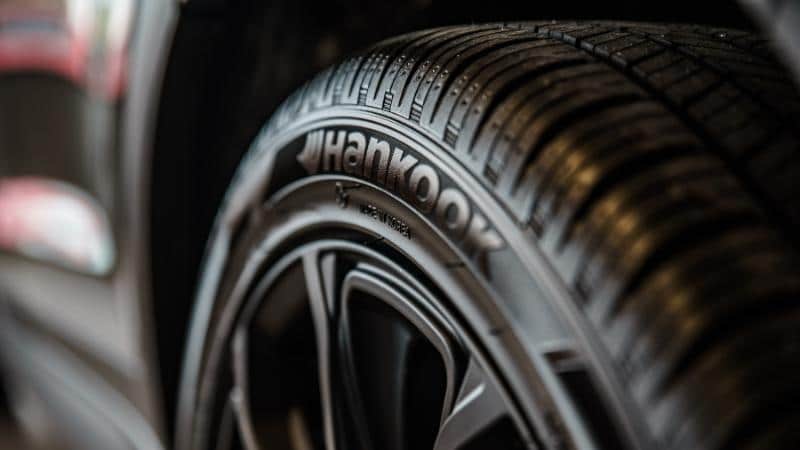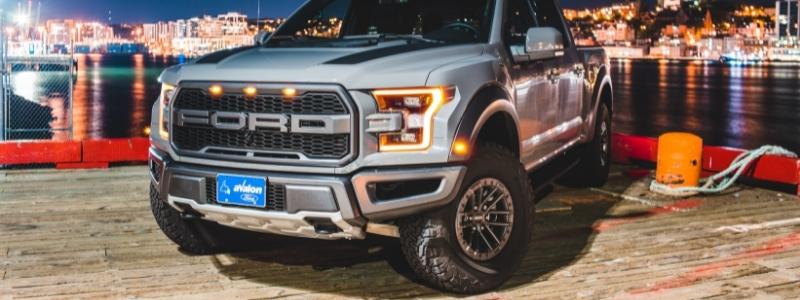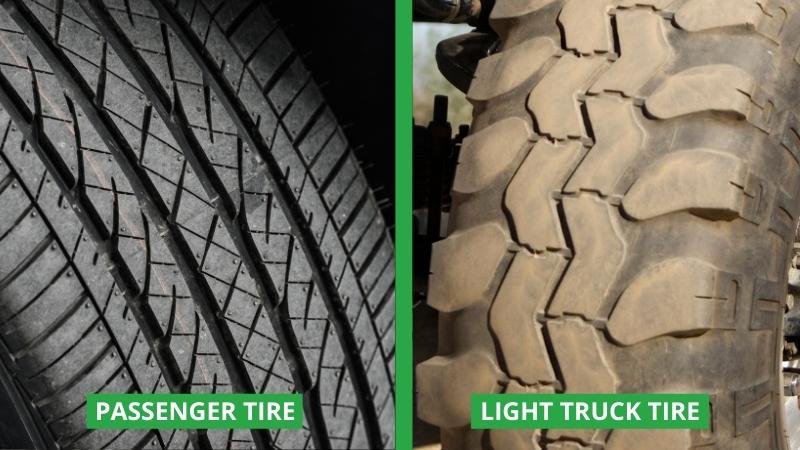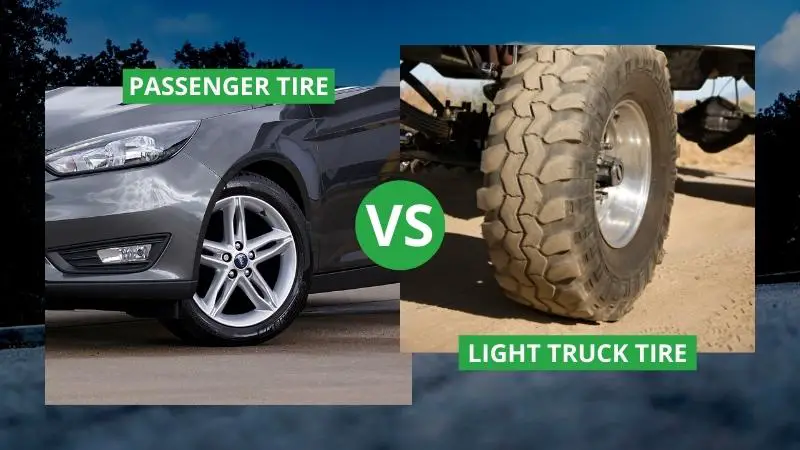You’ve heard of passenger tires and light truck tires, but do you know what the difference is between the two types of tires?
Although passenger tires and light truck tires may seem to be identical, they are two very separate tire kinds.
Passenger tires are intended for use on lighter-weight vehicles such as normal passenger cars, minivans, crossover utility vehicles, SUVs, and light trucks weighing less than 12 tons. Tread patterns for LT tires are intended for bigger vehicles such as 34 ton or larger pickup trucks, SUVs, and vans.
Let’s take a closer look at each of these different types of tires.
What Are Passenger Tires?

Passenger tires are intended to provide a smooth, quiet ride as well as great traction in both wet and dry weather for smaller cars and SUVs.
Passenger tires are not intended to carry heavyweights, and as a result, they should not be used on heavy-duty light vehicles or big SUVs/vans. It is likewise not recommended that passenger tires be utilized for heavy towing or hauling duties. When passenger tires are used inappropriately, they may lead to overloading problems.
Passenger tires are not meant for off-road performance, and they are not as puncture-resistant as Light Truck tires. This is because they are made for comfort rather than performance.
What Are Light Truck Tires?

Light Truck tires are designed to carry not just the weight of 34 tons and bigger pickup trucks as well as SUVs and vans, but also greater loads, as well as towing and hauling requirements.
Because of their increased weight-bearing capacity, LT tires are sturdy and durable, making them ideal for towing big loads and driving in difficult road conditions.
The firmer sidewall does not absorb bumps, vibrations, and road noise, as well as a softer sidewall, would. When used on lighter vehicles and SUVs, reinforced sidewalls might cause the ride stiffness to become more noticeable. For this reason, we normally advocate utilizing LT tires on bigger trucks, SUVs, and vans, or when used in off-road situations.
LT tires feature thicker, reinforced sidewalls that are designed for heavy-duty applications and off-road driving. As a result, many all-terrain and mud-terrain tires are designed in LT rather than p-metric dimensions.
Key Distinguishing Features of Passenger Tires and Light Truck Tires

Now that we’ve examined the construction and design of both passenger and light truck tires, it’s important to highlight key features.
You might have stumbled on some while reading the overview of both tires. However, we’ll be focusing on the most important features that make a difference while driving.
Stay tuned to learn more:
Passenger Tires Are Designed to Provide Both Comfort and Speed
In the case of a vehicle that will not be transporting or towing significant weights, then passenger or touring tires are the best options.
Compared to the rubber components used in LT tires, these tires’ rubber components are more flexible. As a consequence, the ride is smoother and quieter, and the steering and handling characteristics are excellent throughout the year.
Almost all sedans, hatchbacks, minivans, and wagons come with these tires as standard equipment.
Consider high-performance tires if you want a sportier driving experience. They are designed for:
- speed and handling
- they provide improved control
- as well as a firmer and more accurate ride.
If you have a strong desire to be on the road, high-performance tires will not let you down.
Light Truck Tires Are Designed to Perform in More Extreme Conditions
Tires for light trucks and passenger vehicles are fundamentally different in four ways:
- Heavy-duty truck tires, as opposed to passenger vehicle tires, are built to bear heavier weights.
- Light Truck tires are composed of tougher, more durable materials than P tires. As a result, they tend to be heavier and stiffer than their P-rated counterparts.
- In comparison to P tires, light truck tires are built to function at greater inflation pressures.
- The price of Light Truck tires is often higher than the price of P tires.
- A harsher and louder ride is produced by LT tires as a result of their hefty structure, compared to P tires.
Because of these distinctions, LT tires are an excellent option for more demanding applications (think pickup trucks, commercial vehicles, towing, and off-road).
Light Truck Tires and Passenger Tires Have Noticeable Construction Differences
The most noticeable distinction is that truck tires are bigger and broader than automobile tires. Aside from the apparent differences, passenger vehicle tires (and light truck tires mounted on SUVs) often feature two steel belts. All-steel truck and bus tires. Truck tires with doubled steel belts are more sturdy and durable.
Truck tires have 20/32nds or greater tread. When a truck tire is halfway worn down to 10/32 of wear, it still has a lot of treads left, like many new passenger vehicle tires.
In between the tread and the upper steel belt, truck tires typically feature under-tread. Many truck tires can be regripped. When the tread wears down below the legal limit, deeper grooves may be cut into the remaining tread rubber to enable the tire to be used.
When a tire is labeled “REGROOVABLE”, it signifies it may be re-tread when the original wears out. This is not regrooving. This process involves cutting off the old tread and sewing on a new layer, letting the tire’s body or carcass be utilized for further mileage.
It is thicker than the inner liner of a passenger car or light truck tire and contains more halobutyl to prevent pressured oxygen from the tire’s inner chamber from penetrating the tire’s body and degrading its components.
Conclusion
Passenger Tires and Light truck tires have many distinguishing features and we’ve examined most of them in this piece.
Choosing the one that better suits your car is the best bet. Moreover, these tires are interchangeable on some vehicles. Hence, you can make some juicy modifications.
Hi, my name is Niklas, the head content creator & CEO of Whirling Wheelz. I am very interested in vehicles of all kinds, mainly cars. I have a car mechanics degree from high school and a big hobby of mine is to follow the WRC (World Rally Championship) both online and through travel.


